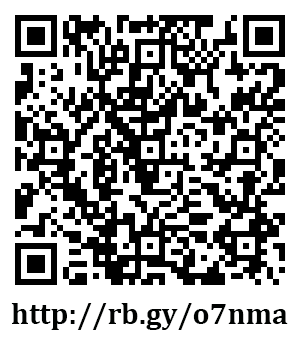PLEASE NOTE: for some procedures, especially those that involve open
(cutting) surgery, your surgeon may discuss shaving of the surgical site with you
 You will see a QR code graphic (right) which, when scanned, will also take you directly to the relevant document on this website.
You will see a QR code graphic (right) which, when scanned, will also take you directly to the relevant document on this website.
Below the graphic there is a short URL which can be typed into a web browser, and will take you to the same document (if no QR code scanner is available).
This graphic also appears on the print versions of the relevant patient information leaflet, from where it can also be scanned.
The QR code graphic can be deployed to:
- patient (or clinician) correspondence;
- posters in your department; and
- your own information leaflets.
(i.e. anywhere where the recipient may wish to download the document to a mobile device and read it off-line).
To save the QR code for your own use, right click the graphic, then select the option to save/download it to your computer
How is the procedure performed?
This is normally performed under a brief general anaesthetic via a telescope passed into the bladder. Guidewires are inserted into the ureteric opening in the bladder and, using X-ray screening, passed up into the kidney. A laser fibre is then used to cut through the narrowed area between the ureter and the kidney.
On occasions, the procedure is performed from above by puncturing the kidney and inserting a larger instrument which is also able to carry a laser fibre.
A ureteric stent is then pushed into the correct position, over one of the guidewires, and the wire is removed once positioning has been confirmed by X-ray.
Click here to view an endoscopic video of the procedure, courtesy of Mr Nigel Bullock